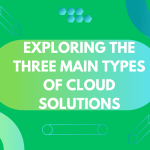In the realm of cloud computing, security is paramount. Ensuring the protection of data, applications, and infrastructure is a joint effort between cloud service providers (CSPs) and their customers. This collaboration is formalized through the shared responsibility model, which delineates the specific security obligations of both parties. Understanding the responsibilities of the cloud provider within this model is crucial for organizations leveraging cloud services.
Security of the Cloud Infrastructure
One of the primary responsibilities of the cloud provider is ensuring the security of the cloud infrastructure. This includes the physical security of data centers, hardware, and the foundational software that supports cloud services. For instance, Amazon Web Services (AWS) is responsible for protecting the infrastructure that runs all of the services offered in the AWS Cloud, which includes hardware, software, networking, and facilities (source). Similarly, Microsoft Azure is accountable for the security of the physical infrastructure of its data centers (source).
Cloud providers typically implement robust security measures to safeguard their infrastructure. These measures can include biometric access controls, video surveillance, and environmental protections against natural disasters. Additionally, CSPs ensure the integrity and security of their hypervisors, which are critical for managing virtual machines and isolating customer data.
Network Security and Service Configuration
Another key responsibility of cloud providers is maintaining network security and service configuration. CSPs are tasked with securing the network infrastructure that supports cloud services. This involves protecting against distributed denial-of-service (DDoS) attacks, ensuring secure connectivity, and managing firewall configurations. For example, AWS and other major CSPs provide services like Virtual Private Cloud (VPC) to help create isolated network environments and manage traffic securely.
In addition to network security, cloud providers are responsible for configuring and securing the cloud services they offer. This includes ensuring that services like virtual machines, storage solutions, and databases are securely configured by default. Providers often offer tools and best practices to help customers maintain secure configurations and monitor their environments for potential vulnerabilities.
Compliance and Data Protection
Compliance with regulatory requirements and data protection laws is a critical responsibility of cloud providers. CSPs must ensure that their infrastructure and services comply with relevant legal and regulatory standards, such as GDPR, HIPAA, and SOC 2. This compliance is essential for building trust with customers and enabling them to meet their own regulatory obligations.
Cloud providers also play a significant role in data protection. While customers are responsible for securing their data in the cloud, CSPs must provide the necessary tools and features to facilitate this. This includes encryption services for data at rest and in transit, identity and access management (IAM) solutions, and security monitoring tools. For instance, Microsoft Azure provides robust encryption options and access controls to help protect customer data (source).
Moreover, cloud providers offer compliance certifications and attestations to demonstrate their adherence to security standards. These certifications provide assurance to customers that the cloud provider has implemented rigorous security controls and is regularly audited by independent third parties.
Conclusion
In the shared responsibility model, cloud providers bear significant responsibilities for securing the cloud infrastructure, maintaining network security, configuring services securely, and ensuring compliance with regulatory standards. By fulfilling these obligations, CSPs enable their customers to focus on securing their applications and data within the cloud environment. Understanding these responsibilities is crucial for organizations to effectively manage their security posture in the cloud.



